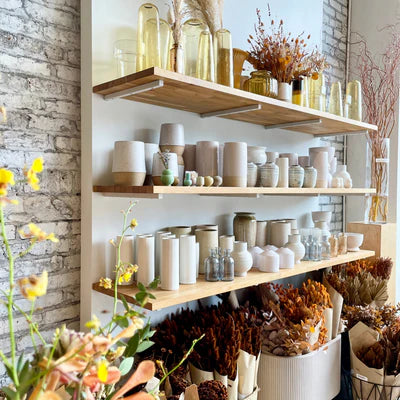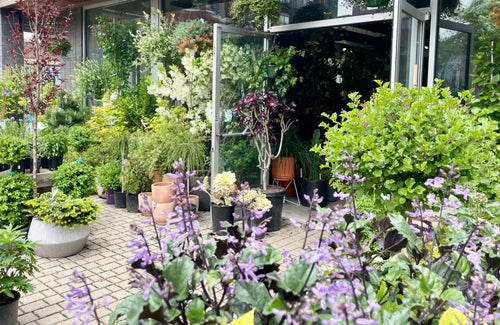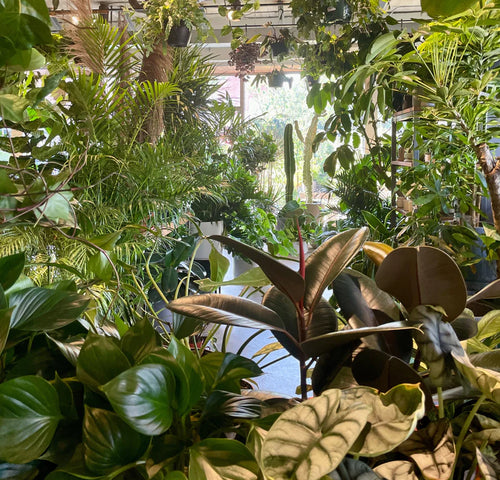🪴Sprout Home: Built to Bloom
Migrating to Shopify Online Store 2.0








Forged from a desire to combine a love of nature with a love of artful design, sprout home opened its doors in the west town neighborhood of chicago in 2003.
Since then, the original garden store has expanded to include its floral store across the street. At SPROUT HOME, our roster of talented gardeners, floral designers, and imaginative minds aim to provide spaces that invite people to learn, create and get inspired.
Migrating to Shopify Online Store 2.0
Upgrade sprouthome.com to leverage OS 2.0 features, focusing: on enhancing flexibility, scalability, and customer experience.
Sprout Home has always prioritized intentional design choices that enrich the customer journey. With Shopify's OS 2.0 introducing sections everywhere, we aligned the platform's capabilities with Sprout Home's vision. 🌿
Key improvements include:
Behind the scenes, we optimized metafields, collections, and code structure to modernize site functionality while maintaining the familiar front-end experience. The result is a more efficient, scalable site that enhances both customer experience and ease of management.
“Working with Ask Kenna was like having a team of mind readers.”
~Sprout Home 🌿✨
Sections Everywhere
Metafields Optimization
Embedded Apps & Tech Stack Simplification
Search & Discovery
One of the most anticipated updates in Shopify Online Store 2.0 was the introduction of Sections Everywhere, and for good reason. This upgrade marked a major shift in how Shopify stores are built and maintained. It gave both developers and merchants the ability to create modular, customizable layouts across the entire storefront without needing to hard-code templates.
For this project, embracing Sections Everywhere was a game-changer. It not only simplified the development process but also empowered the client to take greater control of their own content. In fact, they were able to independently build out custom galleries and landing pages using the new tools, reducing turnaround time and streamlining workflows.
Key Features:
Built by the Sprout Home team, powered by Sections Everywhere and their creativity.
Dynamic Content with Metafields
Another major upgrade in this project was the strategic use of Shopify metafields to power flexible, dynamic content across the site. Instead of relying on hardcoded templates or third-party apps, Sprout Home now manages structured data directly in the Shopify admin - keeping everything clean, scalable, and easy to maintain.
Key Improvements:
Metafields gave Sprout Home a flexible content structure built for scale. Combined with Sections Everywhere, they now have the freedom to build, edit, and personalize their storefront without needing to call in a developer for every change.
This video showcases several metafields in use.
There is additional functionality on the product page that you may have noticed:
Simplifying the Tech Stack
Upgrading to Online Store 2.0 allowed us to streamline the tech stack and improve app integration across the storefront. Legacy apps that relied on third-party scripts or workarounds were replaced with modern, embedded alternatives. In some cases, apps were no longer necessary because their functionality was built directly into the theme. In others, the Ask Kenna team customized the theme to replicate app features, reducing costs and improving performance.
Technical Improvements:
Business Wins:
The result? A smarter, more stable storefront and a team that’s better equipped to grow the business.
We won't be naming the names of apps that were replaced in this section.
Most of these apps were essential to the Sprout Home team's daily work with Shopify, and tied to storefront functionality that just would not have been possible in 2021 with out them!
Shopify was late to the metafield game and apps that could help with dynamic content were vital to Sprout Home's needs.
Most of what we replaced is on the backend. A lot of dynamic content was migrated to Shopify's (newish) native metafields/metaobjects, search functionality, and merchandising.
You've seen some metafields in action above; This video highlights a special feature in the Prestige theme called Variant Image Sets that was tweaked further to include a collection page only image.
In addition, a custom carousel was added. At Ask Kenna we are all in on Accessibility, carousels aren't always the most user friendly. Our developer ensured this one is.
The delay for the slideshow to start is intentional, not a load time issue. Once the page loads the carousel has a delayed start to avoid sudden page load shits. The transitions are also gently on purpose. My personal favourite part is the zoom. It's subtle and you may not notice it because I didn't record my cursor. Try it for yourself.
The variant images rotate on a set interval. When you click to make a image larger, the carousel pauses in the background. This means that when you close the image you wanted a closer look at, you are exactly where you were in the rotation before you opened it.
The carousel also pauses on hover.
Search & Discovery Enhancements
Improving how customers find and explore products was a key part of this project. By implementing Shopify’s Search & Discovery app, we upgraded the store’s filtering, sorting, and product recommendation experience making it easier for customers to navigate, discover, and convert.
Key Improvements:
These updates made it easier for customers to find the right products faster especially on mobile, where streamlined navigation matters most. The result? Higher engagement, better product discovery, and more confident shopping decisions.
Filters that know when to show up!
Shopify’s Search & Discovery app does a good job of only displaying filters that are relevant to the current product set, but we took it further.
Using metafields and metaobjects, we fine-tuned filtering logic to give Sprout Home a much more nuanced, intuitive experience. This level of control meant our team needed the ability to decide when filters should appear, and more when they shouldn’t.
One example: we created a metaobject for Color Family to surface both the primary color of a product and any complementary tones. This gives customers helpful visual cues while they browse or build a look.
We also adjusted filter behavior based on context:
In those moments, we display only the most helpful filters: In Stock, On Sale, & Shipping Available toggles, Color Family, and Collection.
It’s a small detail, but one that supports a smoother, more thoughtful shopping journey.


This wasn’t just a refresh, it was a strategic rebuild. The upgraded store is faster, easier to maintain, and built for long-term growth with fewer apps, less friction, and more control in the hands of the Sprout Home team. 🌱
We cut costs, streamlined tools, and gave them the confidence to manage content and merchandising without relying on dev time. We included a training doc with video walkthroughs giving the team a resource they could learn from now, and reference later.
The goal? Less like Jenga, more like Lego - a modular storefront, carefully rebuilt with pieces that actually fit.
Spoiler alert: it didn’t wobble once.
Acronyms:
Want a store that’s built to scale and doesn’t wobble like Jenga?
Let’s talk. [Contact Ask Kenna →]